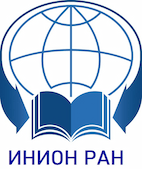№ 3, 2019
Main International Media Freedom Indices: Systematization, Evaluation Criteria and Criticism
The conventional wisdom holds that a free, independent and pluralistic media environment is a necessary condition for the development of democracy. However, what are criteria for media freedom and its measurement tools, and how reliable are the findings obtained with their help?
There are many methods for assessing the degree of media freedom — sociological surveys, expert interviews, analysis of legal acts, etc. However, the most popular method today is the indexing method, which implies studying the dynamics of processes using a set of generalized indicators. The most famous international media freedom indices are the following three: the Freedom House “Freedom of the Press” project, the Media Sustainability Index of the International Research and Exchanges Board and the Worldwide Press Freedom Index, compiled by the non-profit organization Reporters without Borders. These indices attract the attention not only of the professional and expert communities, but also the media that actively publish their results. Thus, the discussion of these results goes far beyond the academic community, and the indices themselves play an important role in public debates about the quality of democracy and freedom of expression.
This article is devoted to the analysis of the mentioned indices and the methodology for their composition. Its main task is to find out to what extent these indices reflect the formal and informal aspects of media freedom and to what extent, if any, the indicators used for compiling such indices allow to assess the level of this freedom and trace its evolution in different countries.
DOI: 10.30570/2078-5089-2019-94-3-185-200
Pages: 185-200
Рассылка
Bondarik Eseniya
Main Page ~ Authors ~ Bondarik Eseniya










